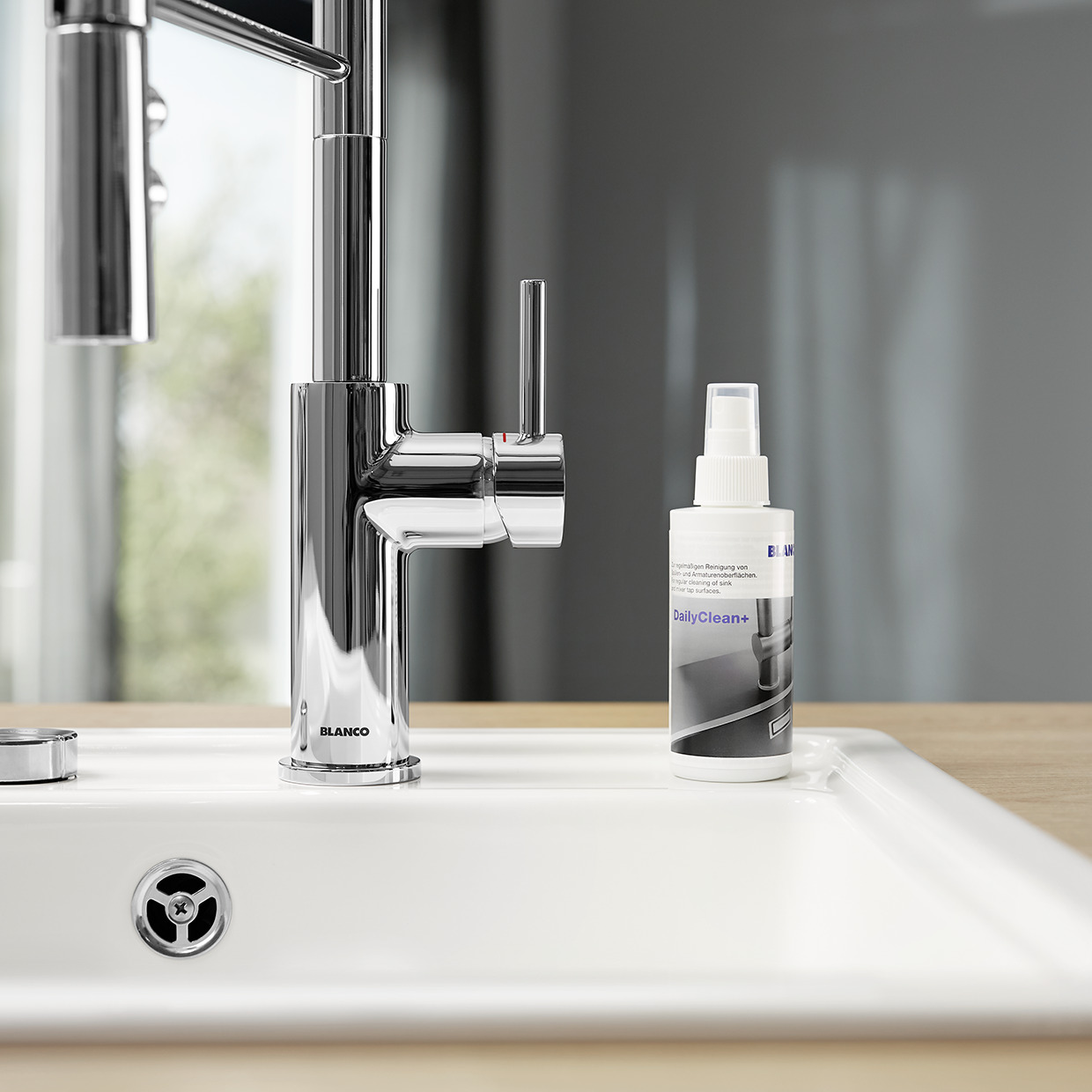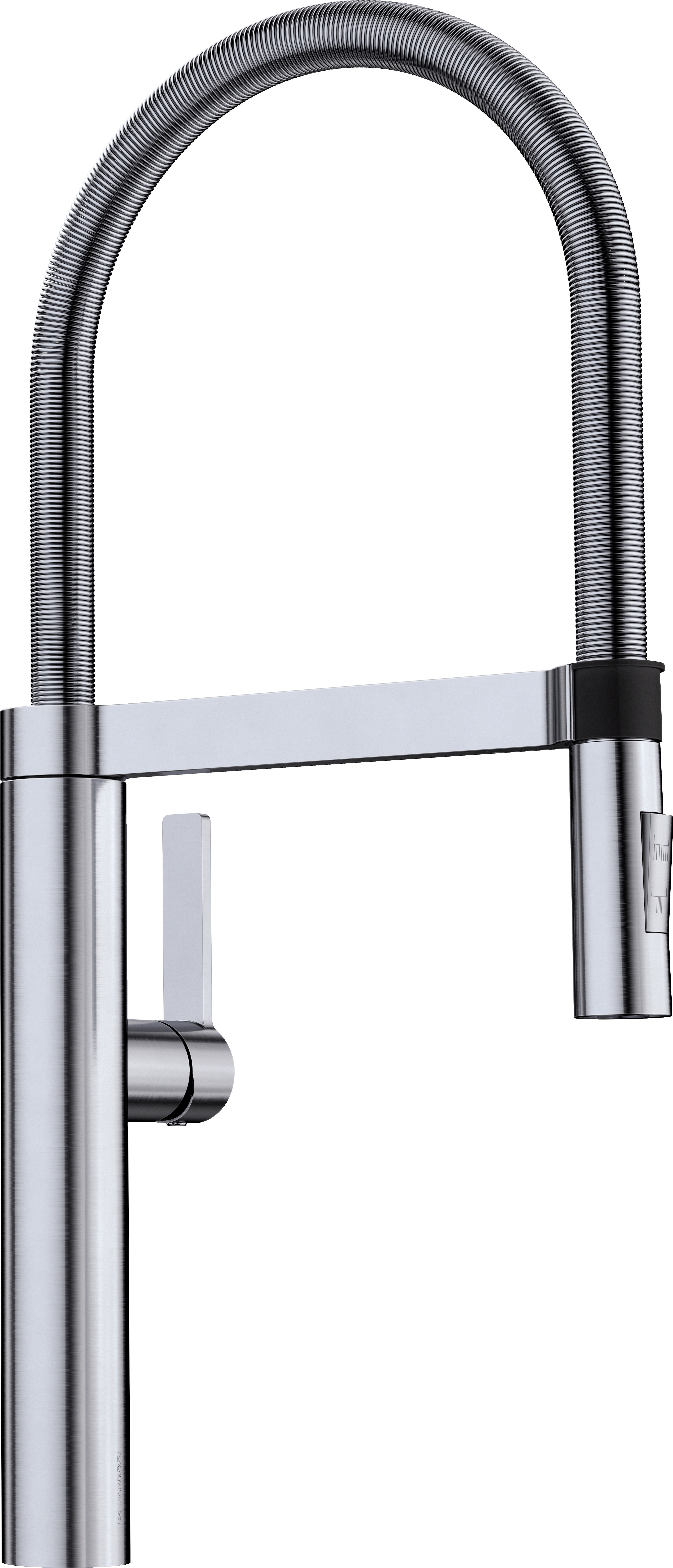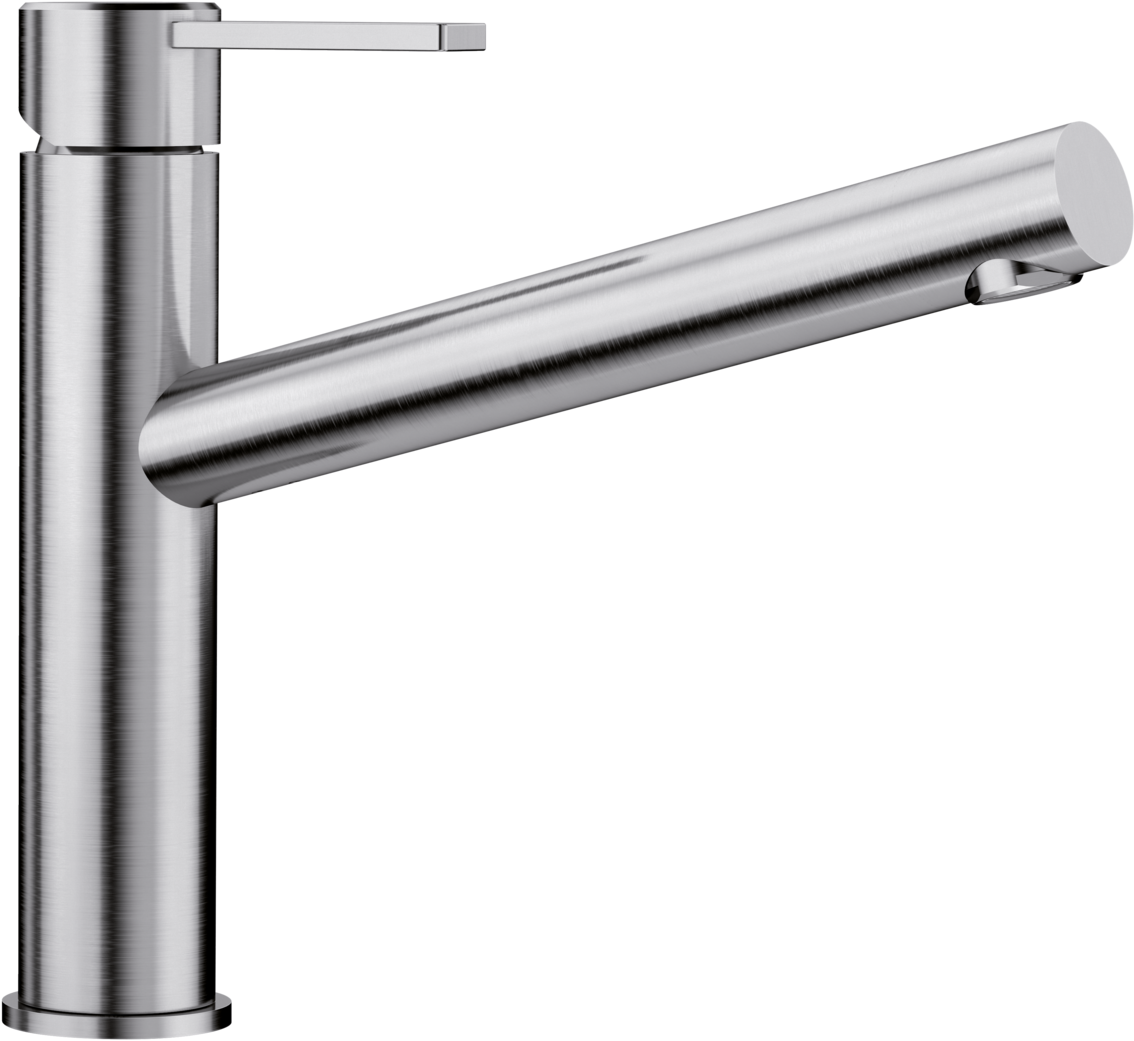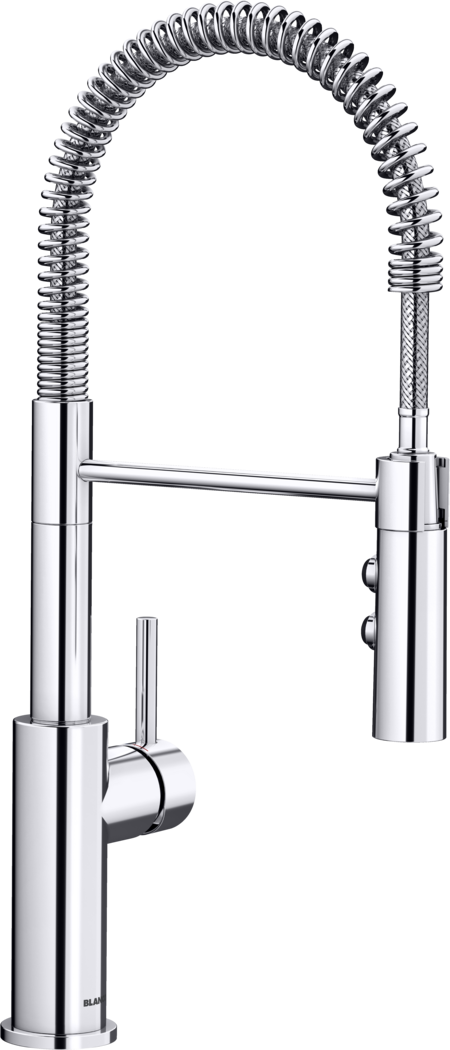Cleaning your kitchen mixer tap: how to make your mixer tap shine
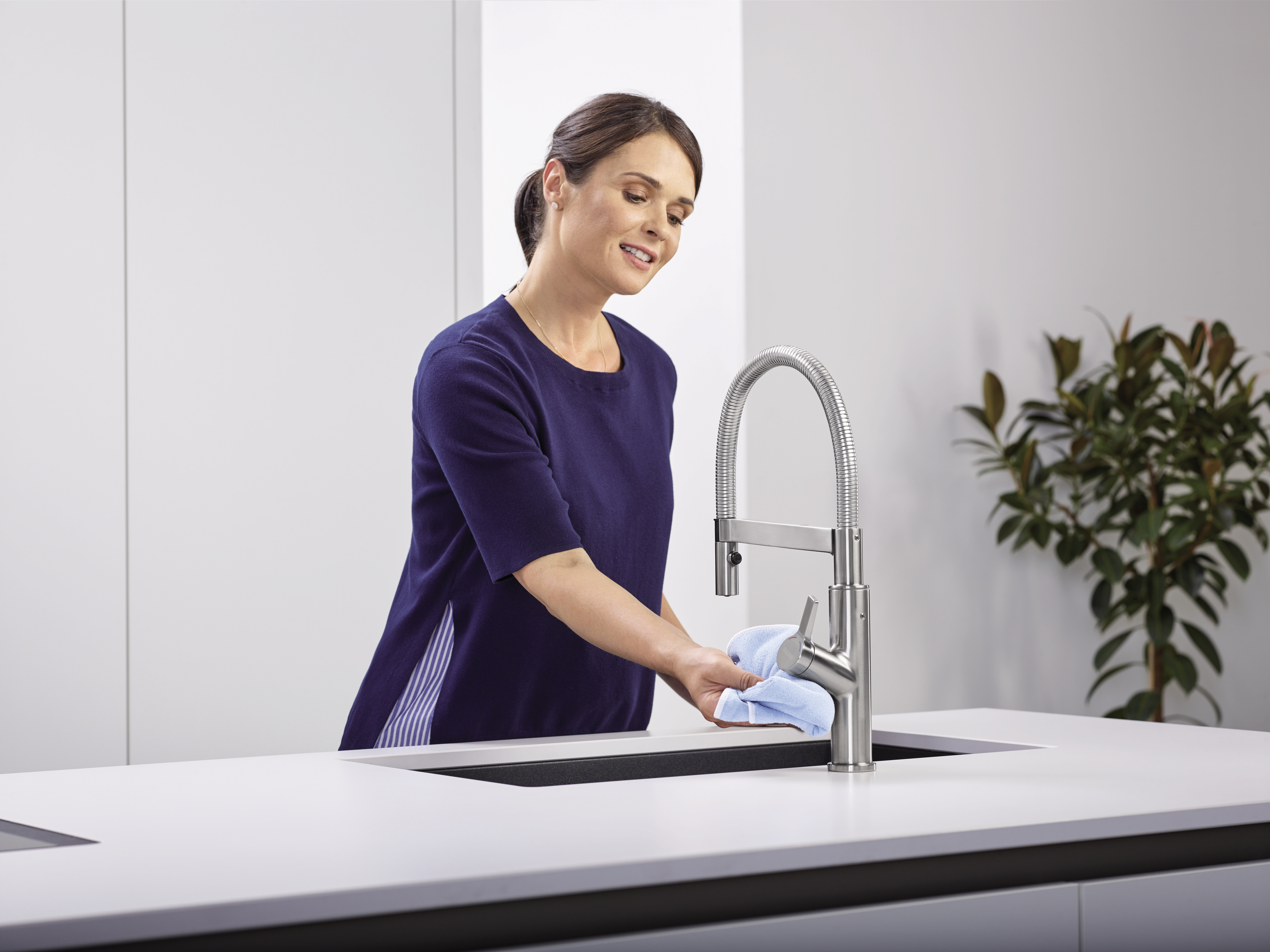
Kitchen mixer taps require regular cleaning: as they are in daily contact with water, limescale can quickly form on the surface. The aerator, the fine-meshed sieve on the outflow, can also become clogged up with limescale deposits, which can cause the mixer tap to start spraying. The following care tips will help you to avoid these problems effectively, so that you can continue to enjoy a shiny tap for a long time to come.
Preventing limescale marks properly
When turning off your mixer tap with wet hands after working in the kitchen, you almost always leave drops of water on it. These dry and leave limescale behind. Visible limescale can form quickly, particularly in regions that have hard water. The term ‘hard water’ refers to a high calcium bicarbonate content in water. Hardly any limescale occurs below a hardness of 4. If you have hard water, you should therefore rub the surface dry with a microfibre cloth after each use, if you don’t want to be constantly cleaning your mixer tap. This will allow you to extend the intervals between regular cleaning.
Removing limescale gently
If limescale has formed, it is best to treat this with a mild, organic acid, e.g. a solution of acetic or citric acid. Important: before applying the substance, check whether your surfaces are resistant to acids. Marble and aluminium, for instance, should not be cleaned with acidic substances. Many plastics and varnishes are also sensitive to acid. As the owner of a BLANCO mixer tap in Stainless steel, Silgranit look or Ceramic look, however, you’re good to go: if used correctly, these materials tolerate cleaning with acetic or citric acid without any issues. Instead of acid cleaners, you could use a mild descaling spray, such as BLANCO Antikalk. This limescale-removing agent has been specially developed for BLANCO mixer taps and sinks. It cleans gently yet thoroughly.
To remove limescale, apply the cleaning agent to the soft side of a sponge and wipe the mixer tap thoroughly. Be sure not to leave acid-based cleaner on for longer than indicated on the package instructions. Avoid lengthy, vigorous scrubbing with the rough side of your sponge. This can scratch your mixer tap. Rinse your mixer tap down with clean water and rub it dry with a microfibre cloth.



Cleaning the aerator
Over time, hard water can cause the water flow through the mixer tap, and especially the aerator, to become clogged up. The aerator, also known as the jet regulator or stream shaper, is the nozzle on the outlet of the faucet. If this closes due to limescale deposits, the outlet may spray water uncontrollably in all directions when the tap is turned on. For this reason, you should clean the aerator at regular intervals.
Acetic and citric acid work well for this purpose, too. Moisten a sponge with either kind of clean and spread it over the fine mesh at the outflow of the mixer tap. An old toothbrush will allow you to give it an even more thorough clean. In most cases, the limescale will dissolve, giving you a neat spray once again. BLANCO spray heads also have practical anti-scale nubs on the aerator, which significantly reduce limescale formation and enable easy cleaning.
Removing stubborn deposits on the aerator
If the limescale is very hard, you should give the aerator a thorough clean. Many BLANCO mixer taps allow you to simply unscrew the small nozzle anti-clockwise. You can then steep the jet regulator in vinegar water or citric acid overnight. Next morning, rinse away the loosened limescale remnants and reattach the aerator by screwing it in clockwise.
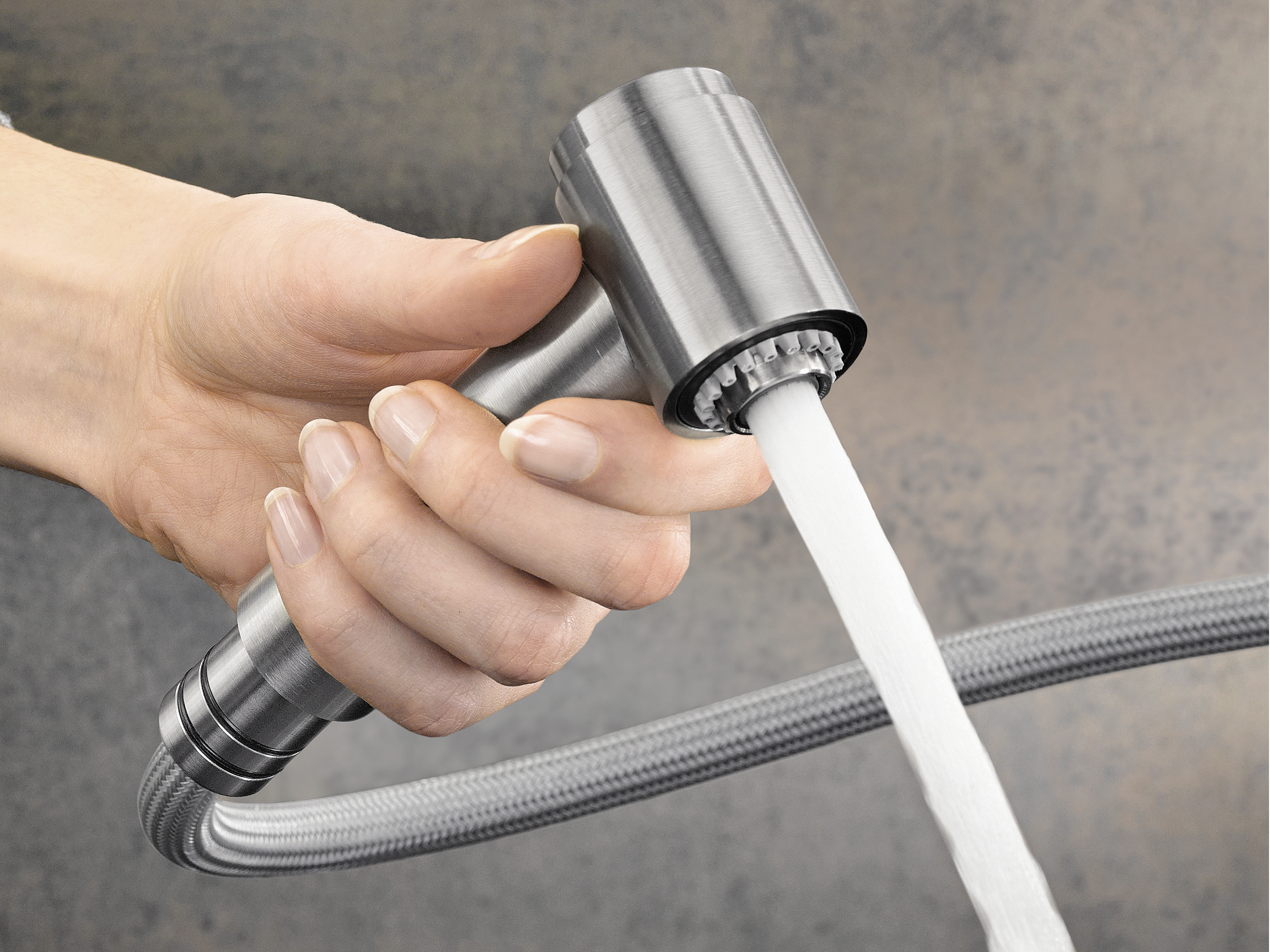
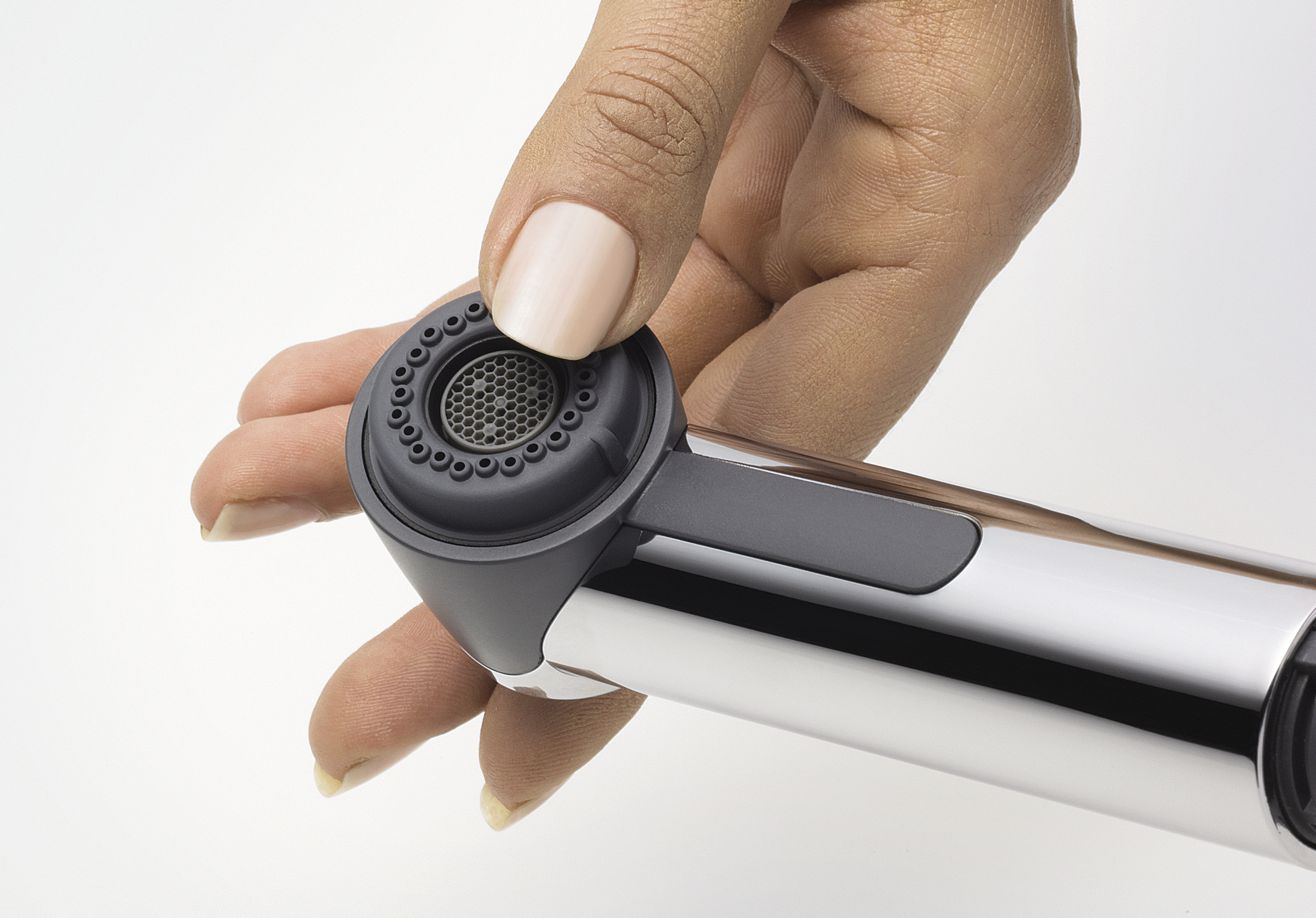
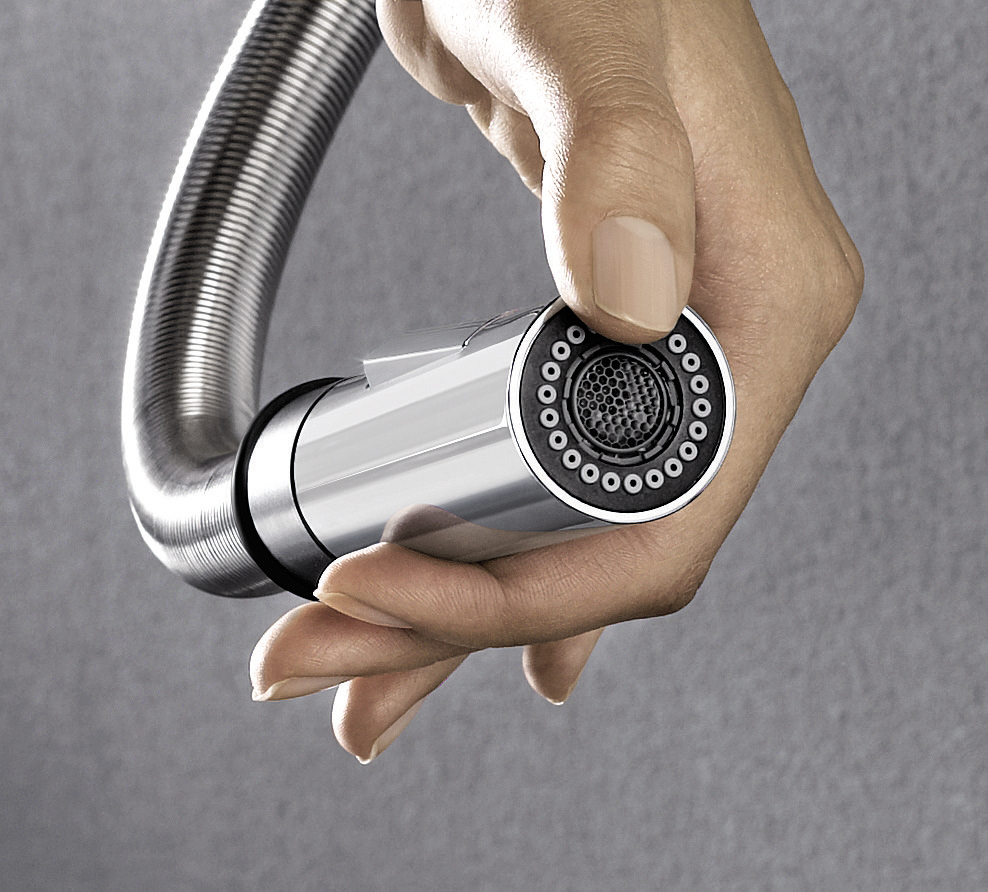
How to look after your pull-out spray
A mixer tap with a pull-out spray is highly practical, as it allows you to reach even the furthest corners of your sink with ease. Vases and tall-sided pots are easy to fill up. But what if the hose no longer slips back easily into its holder? If this happens, apply some fitting lubricant to the moving parts of the hose. The hose will then glide back smoothly into its original position. Having a hose guide in the base cabinet is particularly practical, as it prevents the hose from becoming hooked on things or twisted within the cabinet.
Supplement your mixer tap with a dirt filter
You can also protect your mixer tap by installing the BLANCO dirt filter. This is particularly recommended in old buildings and for old pipes. The small metal mesh filters out dirt particles that come from the water pipes, thus preventing your mixer tap from becoming contaminated. It is fitted between the angle valve – the valve for the water supply beneath the sink – and the connecting hose for the mixer tap. If you have high pressure, you can attach two filters, one in front of the other, while one filter will be sufficient for low pressure.
Questions about mixer taps
Generally speaking, our mixer taps are easy-care and hygienic. This is thanks to their smooth surface, which allows hardly any dirt to settle on it. However, mixer taps do benefit from regularly cleaning. It doesn’t take much effort, but it needs to be done frequently. Take a mild cleaning agent and go over the mixer taps a few times with the soft side of a sponge. Now rub them dry with a microfibre cloth, and you’ll see that your mixer taps are back to being a stand-out feature of your kitchen once again, in just a few simple steps.
If your low-pressure mixer tap is dripping slightly, there’s no need to get a plumber in right away. This is completely normal. The reason is that low-pressure mixer taps are normally connected to a boiler. If you have used some warm water, cold water will flow into the boiler to be heated up. The rise in temperature means that the water in the pipe expands. As a result, the rising water pressure causes a small amount of water to be pushed into the mixer tap, where a few drops will escape.
Most people will need a high-pressure mixer tap in their home. This is always the case if the water is heated by the central water supply. You can tell whether applies to you if your kitchen has a wall valve for both cold and warm water pipes. You will therefore need a mixer tap that can handle the high water pressure from the pipes. Sometimes, however, your flat or house many not have a central hot water supply. In this case, the water will be heated by a boiler or flow heater. If your home has a flow heater for warm water, you will also need a high pressure mixer tap. A low-pressure mixer tap is required if your warm water is supplied via a boiler. This minimises the pressure from the water pipe and conducts the water at a much lower pressure into the boiler.
Our pull-out sprays make your everyday life a little easier. They allow you to get the water to the part of the sink where it is actually needed. Flexible and effective. As such, our hoses are designed for constant movement. Just make sure that the hose does not develop any kinks. This can damage it, causing it to start dripping.
If the hose is no longer gliding smoothly back into the body of the tap, this doesn’t mean that you’ve done something wrong. Simply apply a little mixer tap lubricant as soon as the first signs start to show. That should do the trick. The hose will then glide back into place quickly and directly, just as it did before.
Imagine standing in the sunshine at the kitchen window and calmly doing the washing up. Our mixer taps make this possible. Just take a look at our detachable, lowerable or collapsible mixer taps. These three concepts allow you to open the window on the other side of your sink easily and in only a few steps.
A spraying mixer tap gets water everywhere, not just in the sink bowl. This is usually caused by limescale that has accumulated in the mixer tap. Instead of reaching straight for an aggressive cleaning agent, adding a little citric acid or vinegar to your cleaning water should solve the problem.
To clean it, wipe the fine mesh attached to the tap outlet clean. Go over it again with a soft microfibre cloth. The trick to preventing a spraying mixer tap is to clean it regularly, so limescale doesn’t get the chance to build up.
Splish, splash: a dripping tap is very annoying. However, there’s no need for agitation. This is either due to limescale deposits in the mixer tap cartridge, or the seals are no longer fit for purpose. Unless you’re very adept at DIY and have a well-equipped toolbox, it’s best to call a sanitary specialist to deal with this. If you’re up to handling it yourself, clean any calcified areas of the seals or mixer tap with citric acid or vinegar. If the seal has become porous it should be replaced using the right tool. Once that’s done, everything in your kitchen will be back in order again.
